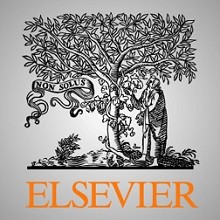
تأثیر شرایط هواشناسی بر غلظت PM2.5
Abstract
۱٫ Introduction
۲٫ General meteorological conditions and PM2.5 concentrations across China
۳٫ Spatial and temporal patterns of meteorological influences on PM2.5 concentrations across China
۴٫ Methods for quantifying meteorological influences on PM2.5 concentrations
۵٫ Underlying mechanisms of PM2.5-meteorology interactions
۶٫ Major challenges for better understanding meteorological influences on PM2.5 concentrations
۷٫ Major meteorological means for mitigating PM2.5 pollution in China.
۸٫ Conclusions
CRediT authorship contribution statement
Declaration of Competing Interest
Acknowledgement
Appendix A. Supplementary material
Research Data
References
Abstract
Air pollution over China has attracted wide interest from public and academic community. PM2.5 is the primary air pollutant across China. Quantifying interactions between meteorological conditions and PM2.5 concentrations are essential to understand the variability of PM2.5 and seek methods to control PM2.5. Since 2013, the measurement of PM2.5 has been widely made at 1436 stations across the country and more than 300 papers focusing on PM2.5-meteorology interactions have been published. This article is a comprehensive review on the meteorological impact on PM2.5 concentrations. We start with an introduction of general meteorological conditions and PM2.5 concentrations across China, and then seasonal and spatial variations of meteorological influences on PM2.5 concentrations. Next, major methods used to quantify meteorological influences on PM2.5 concentrations are checked and compared. We find that causality analysis methods are more suitable for extracting the influence of individual meteorological factors whilst statistical models are good at quantifying the overall effect of multiple meteorological factors on PM2.5 concentrations. Chemical Transport Models (CTMs) have the potential to provide dynamic estimation of PM2.5 concentrations by considering anthropogenic emissions and the transport and evolution of pollutants. We then comprehensively examine the mechanisms how major meteorological factors may impact the PM2.5 concentrations, including the dispersion, growth, chemical production, photolysis, and deposition of PM2.5. The feedback effects of PM2.5 concentrations on meteorological factors are also carefully examined. Based on this review, suggestions on future research and major meteorological approaches for mitigating PM2.5 pollution are made finally.
Introduction
PM2.5(atmospheric particles with aerodynamic diameters less than or equal to 2.5 μm) has become one major airborne pollutant across China and attracted widespread public interest, when a severe and persistent pollution episode occurred in Beijing in December 2012. Since then, PM2.5 dominated haze episodes have been frequently reported across China (Huang et al., 2014; He et al., 2017; etc.). Due to its negative influence on human health (Lanzinger et al., 2016; Li et al., 2015b; etc.), studies concerning the characteristics (Zhang et al., 2013; Wang et al., 2016; etc.) and sources (Gu et al., 2014; Liu et al., 2014; etc.) of PM2.5 have been massively conducted in recent years. One key step for comprehensively estimating and managing PM2.5 pollution is to quantify its major influencing factors. Anthropogenic emissions have been widely accepted as the dominant driver for PM2.5 concentrations, whilst meteorological conditions also exert a strong influence on long-term PM2.5 variations (He et al., 2017). Yang et al. (2016) quantified that meteorological conditions alone contributed 1.8 out of 15 µg m−۳ decade−۱ PM2.5 variation in eastern China from 1985 to 2005. Gui et al., (2019) calculated that meteorological conditions accounted for 48% of PM2.5 variations in Eastern China from 1998 to 2016. Zhang et al. (2018) indicated that the relative contribution of meteorological conditions to heavy pollution episodes within BeijingTianjin-Hebei region was larger than 50% from 2013 to 2017. Chen et al., (2019) indicated that meteorological variations contributed about 20% of PM2.5 reduction in Beijing from 2013 to 2017. To further examine the strong, yet inconsistent meteorological influences on PM2.5 concentrations, many studies have been conducted and suggest that multiple meteorological factors, including temperature (Li et al., 2015a; You et al., 2017; etc.), wind(Yin et al., 2017; etc.), humidity (Liao et al., 2017; Cheng et al., 2017; etc.), precipitation (Li et al., 2015; Guo et al., 2016; etc.), radiation (Chen et al., 2017), atmospheric pressure (Zhang et al., 2015; You et al., 2017; etc.) and planetary boundary layer height (Du et al., 2013; Zheng et al., 2017; etc.), are closely related to PM2.5 concentrations.
